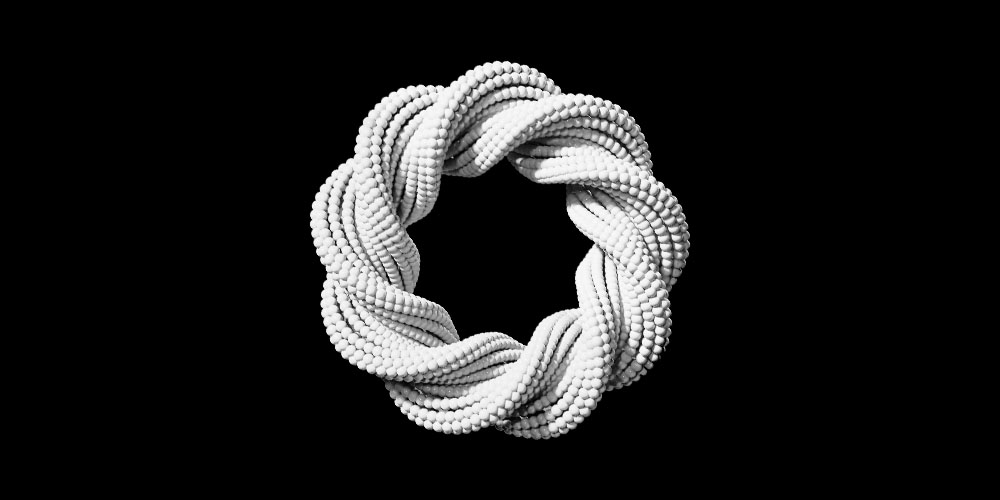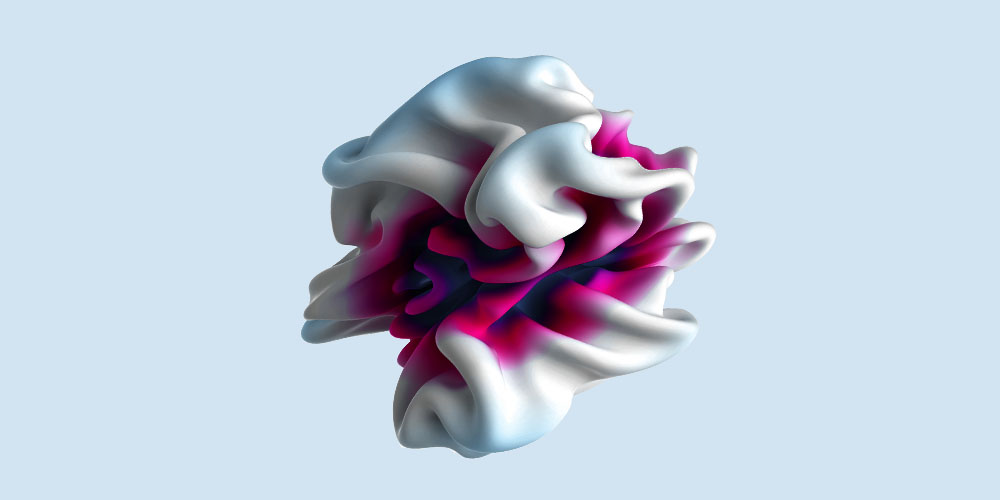With tons of people and companies competing for your customer’s attention, a boring informational email won’t stand a chance in their inbox.
What can you do to get their attention? Try a story-based approach in writing your SaaS emails.
In this post, we’ll discuss why storytelling is an effective marketing tool and specific techniques for writing a good story-driven email.
Don’t wait for the muse. Apply this step-by-step method to write high-performing email campaigns in hours, not weeks.
The role of storytelling in product emails
Whether it’s a video ad or an email, storytelling is a powerful marketing tool because it helps software companies connect with their audiences on an emotional level by using a relatable experience. This, in turn, drives more sales.
The story-based approach makes marketing emails less “salesy”, increasing the chance of people reading on until your call-to-action.
Here are other benefits of storytelling:
- Drives engagement. Stories compel your readers to read on and convince them to take action.
- Helps build trust in your brand. A spot-on story proves that you really understand your customer’s pain points.
Five techniques for writing a story-driven SaaS email
Good storytelling doesn’t have to be about an exciting or heart wrenching experience. Even mundane, everyday experiences can help you illustrate how your product can help your audience.
Here are five techniques to get you started in writing a story-driven email.
#1. Use the problem-solution approach
In this technique, the email highlights a common pain point or challenge among the target audience (the conflict). To make it more relatable to the readers, marketers would often agitate the problem highlighted in the story.
The SaaS product is then presented as the ideal solution (the resolution) that will help the audience achieve their goals.
Campsite, a collaboration tool for teams, shows us a great way of using this approach.
Subject: Feedback request email from Campsite
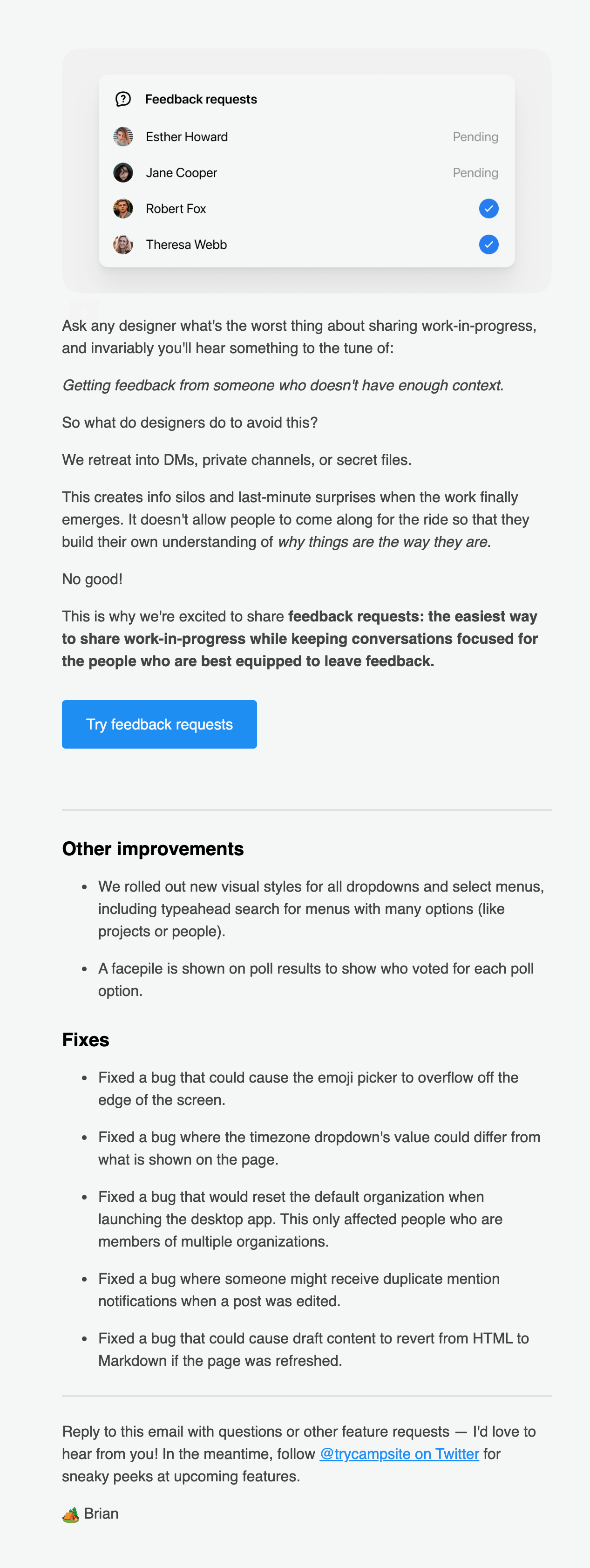
In the first part of the email, they highlight a common pain point among designers: the horror of getting feedback on your design from someone who has no context.
They create a solid bridge between the conflict and the solution (their product) by talking about how the resulting info silos affect the entire workflow across the company.
Let’s look at another example from Coda, a document editor that uses features from spreadsheets, presentation documents, word processor files, and more so your team can collaborate effectively.
Subject: This is the end of pointless meetings.

While it doesn’t tell the story in written form, the visual above the fold tells us a common pain during team meetings: personal notes are subjective, causing your team to lose sync on timelines and deliverables.
They go on to highlight some of Coda’s features that can help teams become more efficient and in sync during and after meetings.
Here’s another example. This email is from Lyssna, a user research and usability testing platform.
Thanks to Diane Leyman for providing this example.
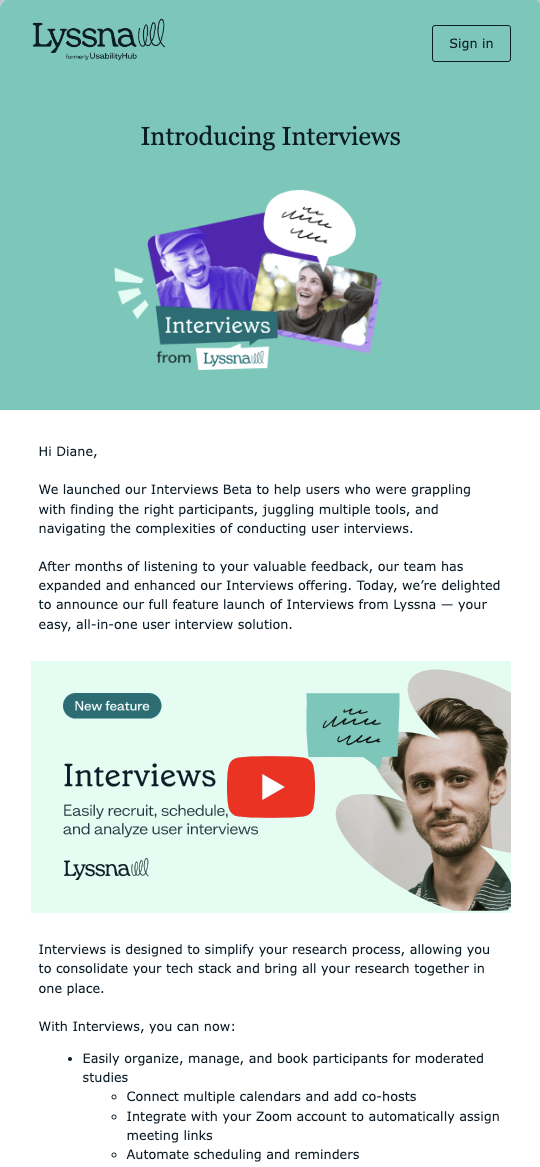
In this product launch email, Lyssna tells a short story about the transition of their Interviews Beta to a full feature launch. It highlights the struggles of a user researcher — finding the right participants, juggling multiple tools, and the complexities of doing user interviews — and presents their Interviews feature as the solution. It then gives an overview of the new feature in bullet points, making it easy to skim.
We like that the email included a video embed to cater to those who prefer a visual explanation of the new feature.
#2. Set the stage
In this technique, your email has to describe the context and industry in which your SaaS product operates.
Similar to the problem-solution approach, setting the stage involves describing a conflict in a larger context (the industry or market) instead of a problem on an individual level.
The SaaS product is presented as the transformative solution to help the audience thrive in spite of the challenges in the market.
Here’s an example from Slido, an easy-to-use platform that helps you set up Q&As and polls to make your meetings more engaging and inclusive.
Thanks to Jana Molcan Hrinova for providing this example.
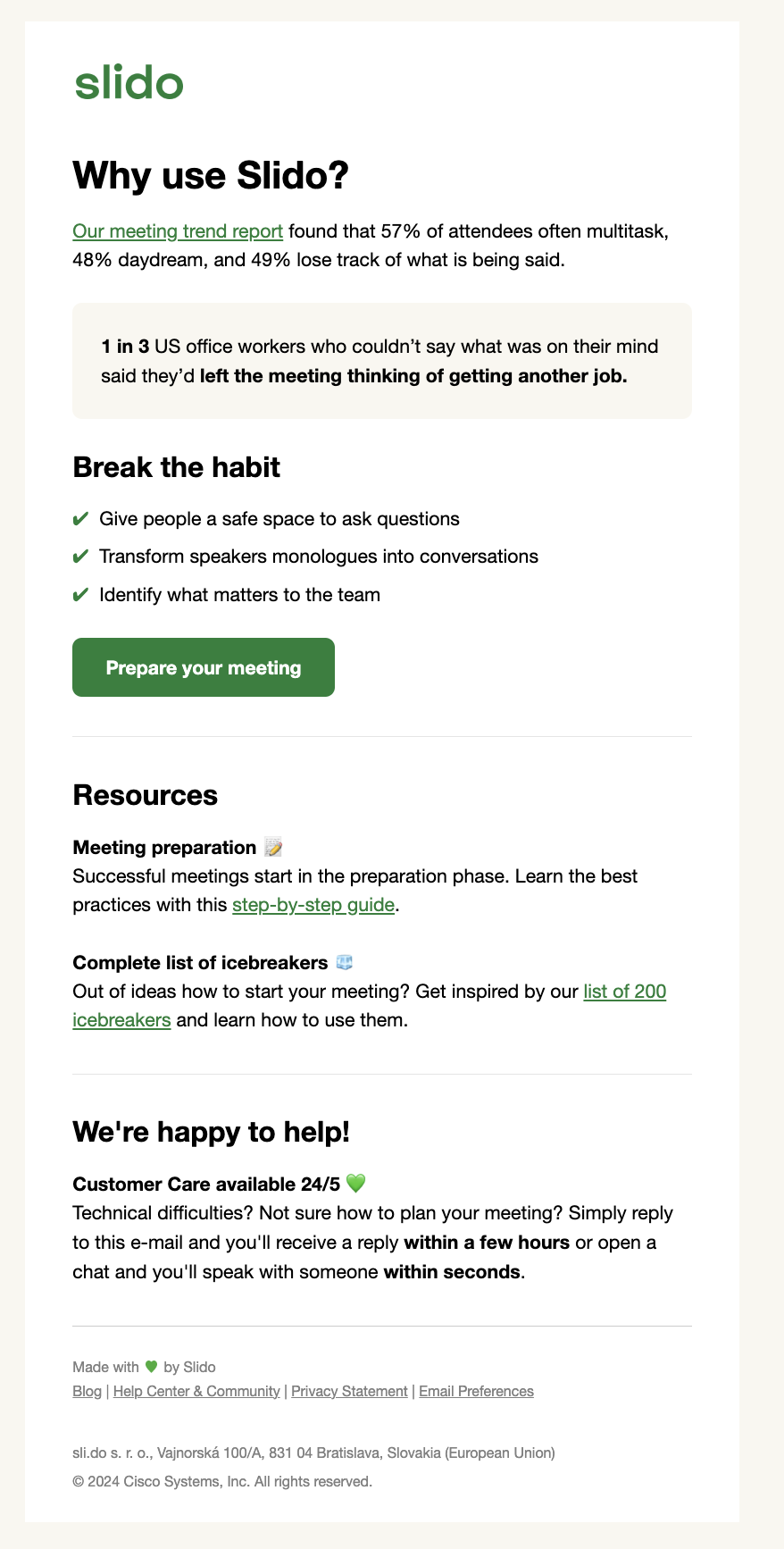
This email tells us about the difficulty of keeping employees engaged in a meeting. It then highlights how being unengaged might encourage the employee to look for another job.
Slido then presents a few things you can do to keep employees engaged during meetings, all of which are addressed by features in their platform. They also include additional resources on how to keep your meetings engaging.
#3. Showcase dialogues with users
Whether you see them on landing pages or emails, customer testimonials and quotes have a huge marketing impact because they prove that real people trust your brand.
These dialogues could also be in the form of customer conversations or Q&As to make them more interactive and humanize the brand.
Take this example from Headspace, an app that helps users achieve better mental health:
Subject: This week, find strength in community
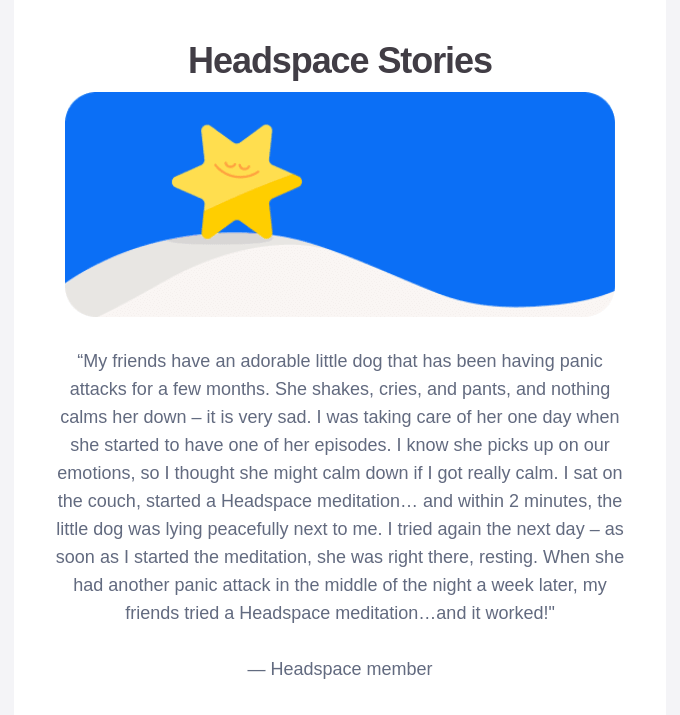
Their newsletter has a section called Headspace Stories. This particular story showcased how the app helped their user while they were pet-sitting for a neighbor. The story goes on to tell how the app not only helped the user, but the anxious little dog as well.
Let’s look at another example. The one below is from Canny, a platform that helps SaaS companies keep track of their customer feedback:
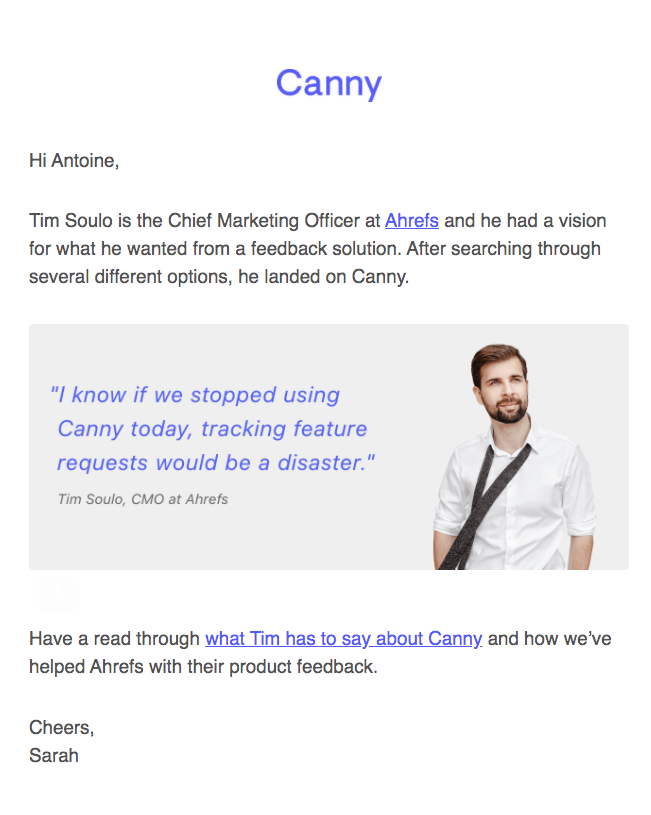
The email starts off by mentioning Tim’s role at Ahrefs, giving this testimonial more credibility. They then talk about his previous struggles with feedback solutions (the conflict) until he found Canny (the solution).
They then link to a longer blog post about Ahrefs’ experience if the reader wants to know more.
Aside from testimonials and positive reviews, you can also use constructive customer reviews to show that you’re listening to their feedback. This is especially useful for your new feature announcement emails.
Take this example from Polar Habits, a guilt-free habit tracker with no streaks and momentum system to help you keep moving forward.
Subject: Time for new beginnings! 🚀

The email starts off with the maker talking about how he created Polar Habits as a solution to his own problem. It then shows us a constructive customer review that talks about the difficulty they encountered with the momentum visualization over a longer time period (the conflict).
We liked that the maker was humble to admit that this is a major flaw in his tool and showed empathy by admitting that he has encountered the same problem.
The email then introduces their new feature called “new beginnings” to solve this problem.
Don’t wait for the muse. Apply this step-by-step method to write high-performing email campaigns in hours, not weeks.
#4. Use visuals
Humans are visual beings, which is why visuals assets are another great way to tell a story.
Visuals could come in the form of photos, infographics, screenshots, or explainer videos to illustrate the narrative and help readers better understand the features and benefits of your SaaS product.
Let’s take this example from Flock, a business communication and group collaboration app for teams.
Subject: Smiles Davis, channel your inner communicator

The email starts with introducing us to Ruby and the rest of her team (the characters). We then discover that the members want to communicate different things within the team:
- Ruby wants her team to collaborate and send work updates
- Mario wants to schedule a one-on-one with Ruby
- Joanna wants to share a photo of her pet
By illustrating these different communication use cases, Flock highlights how their features can serve each.
Here’s another example from Typeform.
Subject: Have you heard of VideoAsk 💁♀️?
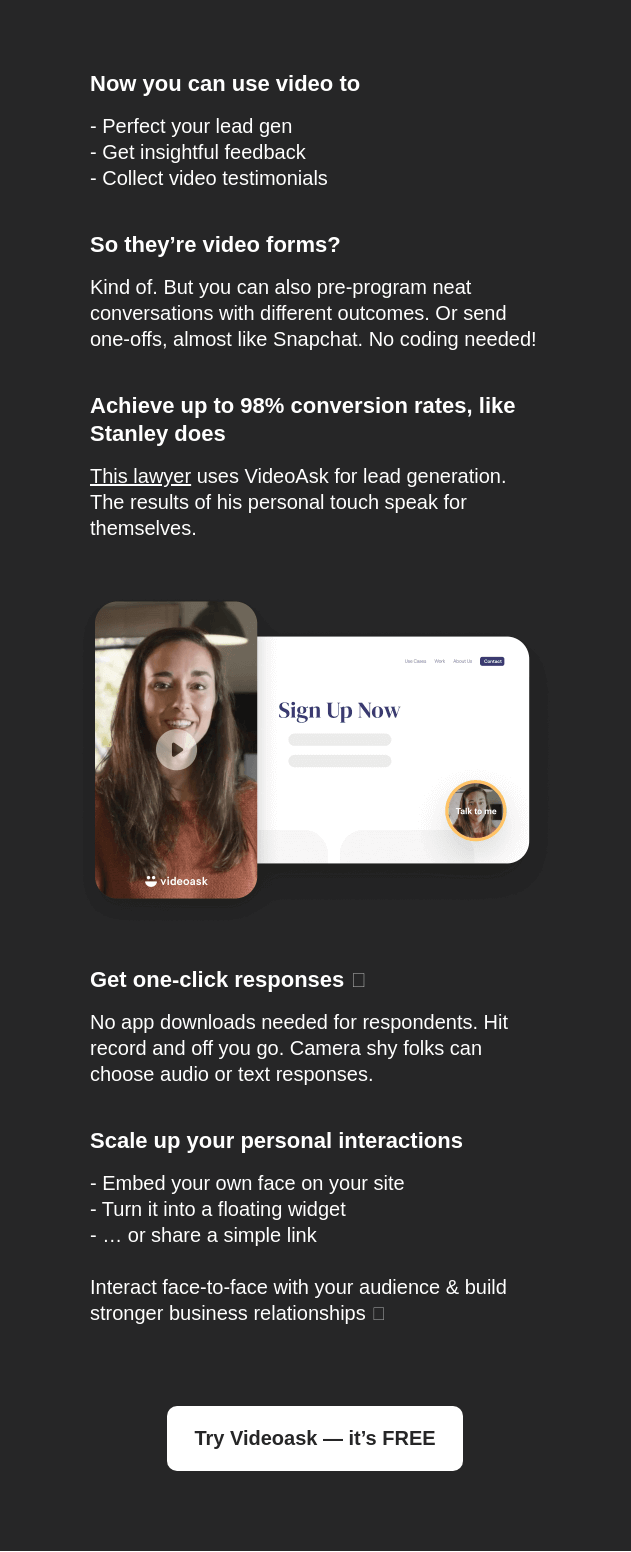
They sent out this email to introduce VideoAsk, their interactive online video tool that lets you create personalized, asynchronous, conversations.
After highlighting the benefits of video in marketing and what VideoAsk exactly does, Typeform highlights a lawyer’s experience to showcase how they helped his business increase conversions. They link to a landing page with his video testimonial.
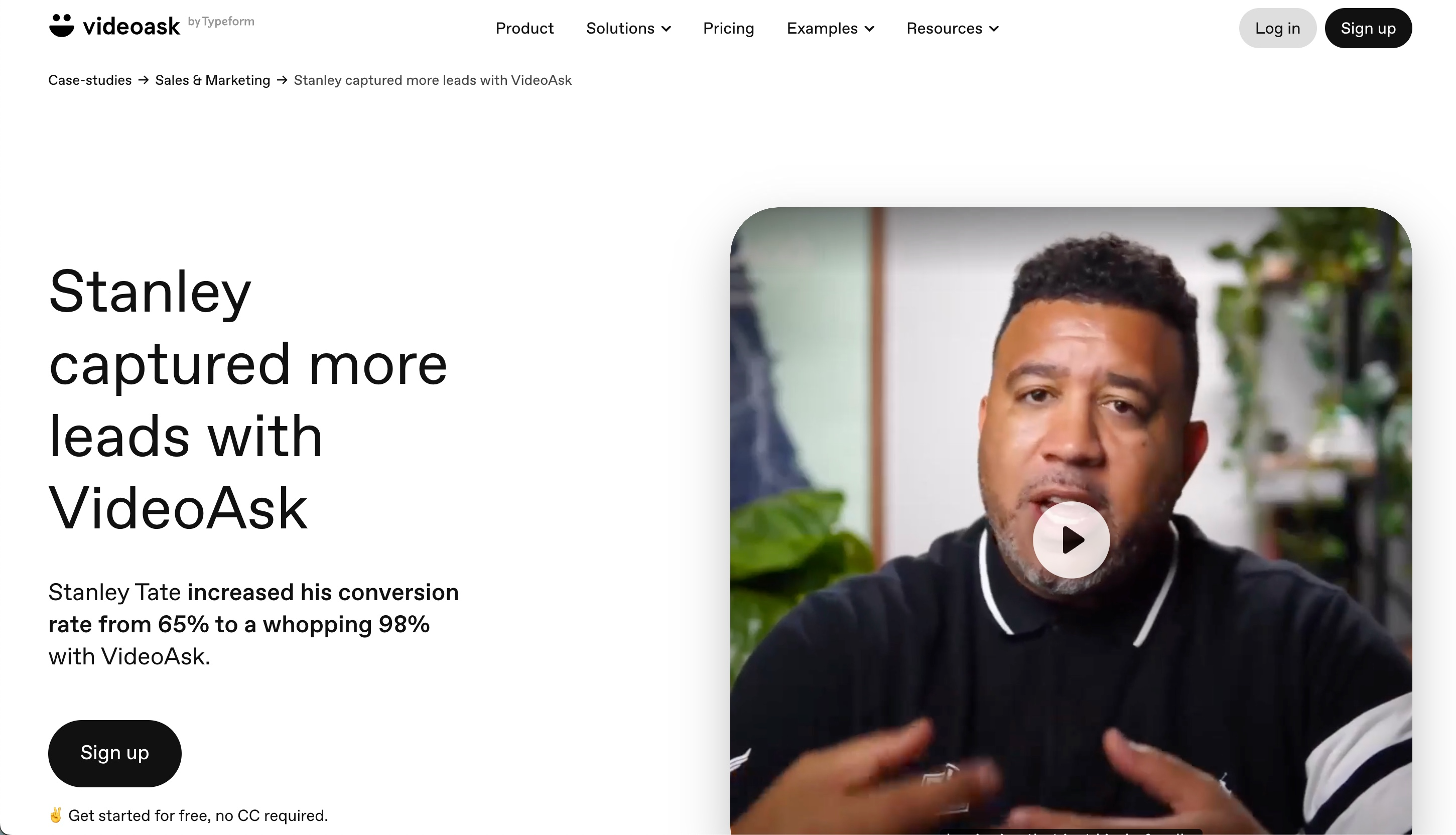
Let’s take a look at another example. This one is from Squarespace, a user-friendly website builder that lets you create and host your website, manage your content, and more.
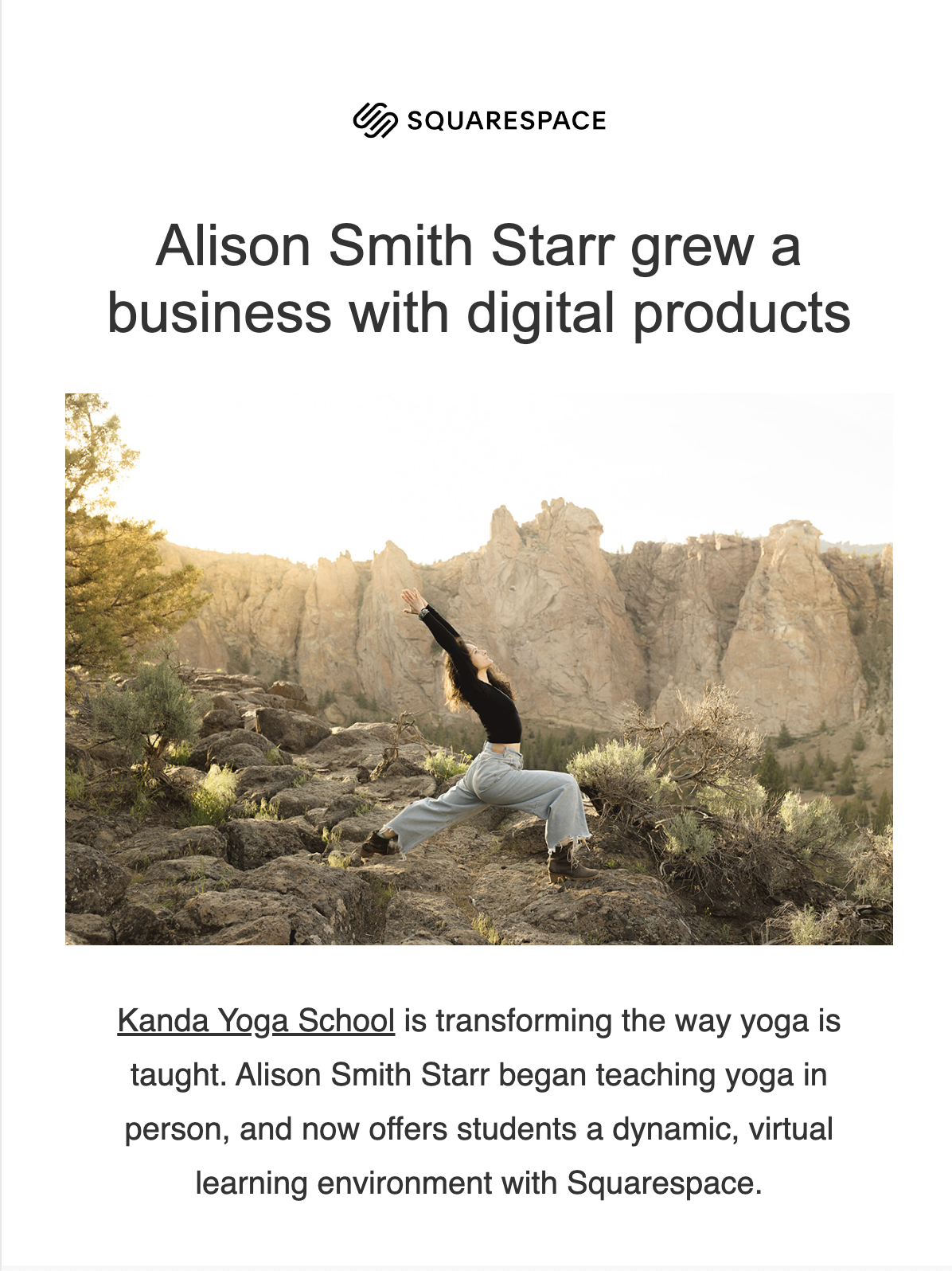
In this email, Squarespace tells a short story about how their user, Alison Smith Starr, used their platform to transform how she taught yoga — from doing it in person to expanding it in a virtual environment.
By using this photo of Alison, it immediately gives the reader an idea of what she does and that she’s a real person.
And here’s a fun one from Publer, a social media management platform.
Subject: Move Over Batman & Robin, Meet Another Unstoppable Duo! 📖

Publer sent out this email to introduce their AI Assist feature. Instead of the typical feature announcement email, they’re talking about the benefits in a comic strip form.
In this email, Publer and AI Assist are the superheroes of the story, while the creative block (in the form of Mr. Zero) is the villain. Although the email is lengthy, the visual storytelling encourages the user to keep reading to the end of the email.
#5. Build anticipation
Just like a good book, TV show, and movie, we love being kept at the edge of our seats — and you can definitely do the same with email.
Use this technique in your next SaaS email to get your readers excited about your upcoming features, product updates, or events.
Shutterstock used this technique to invite readers to join their creative AI showcase last year.
Subject: The Shutterstock Creative AI Showcase: Big opportunities ahead
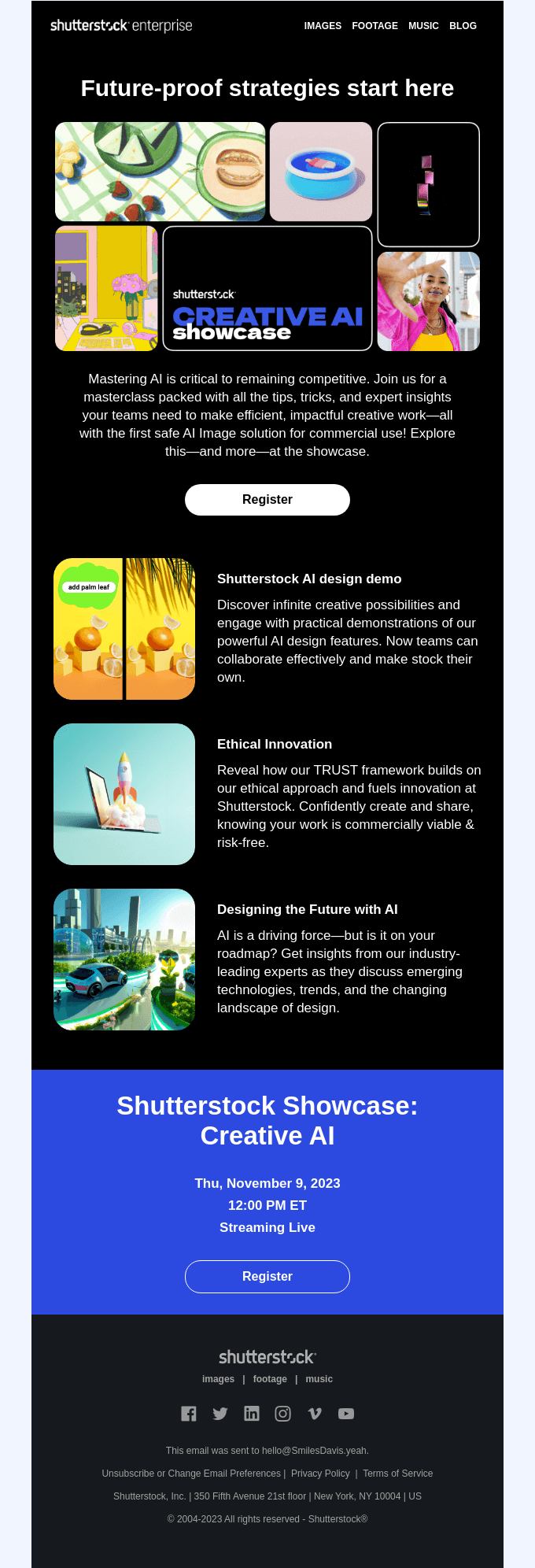
With the growing popularity of artificial intelligence across industries, Shutterstock piques the interest of the reader by saying that designers can future-proof their career by mastering (instead of resisting) AI. They go on to talk about the different masterclasses that can help the reader do exactly that.
Here’s another example from Figma.

They sent out this email to update readers about what they announced at Config 2023. The screenshots and short descriptions tell the readers about the new features they can get their hands on.
Let’s take a look at another example. Here’s an email from Havenly, a platform to discover interior designing and decoration services.
Subject: Something new is coming to Havenly
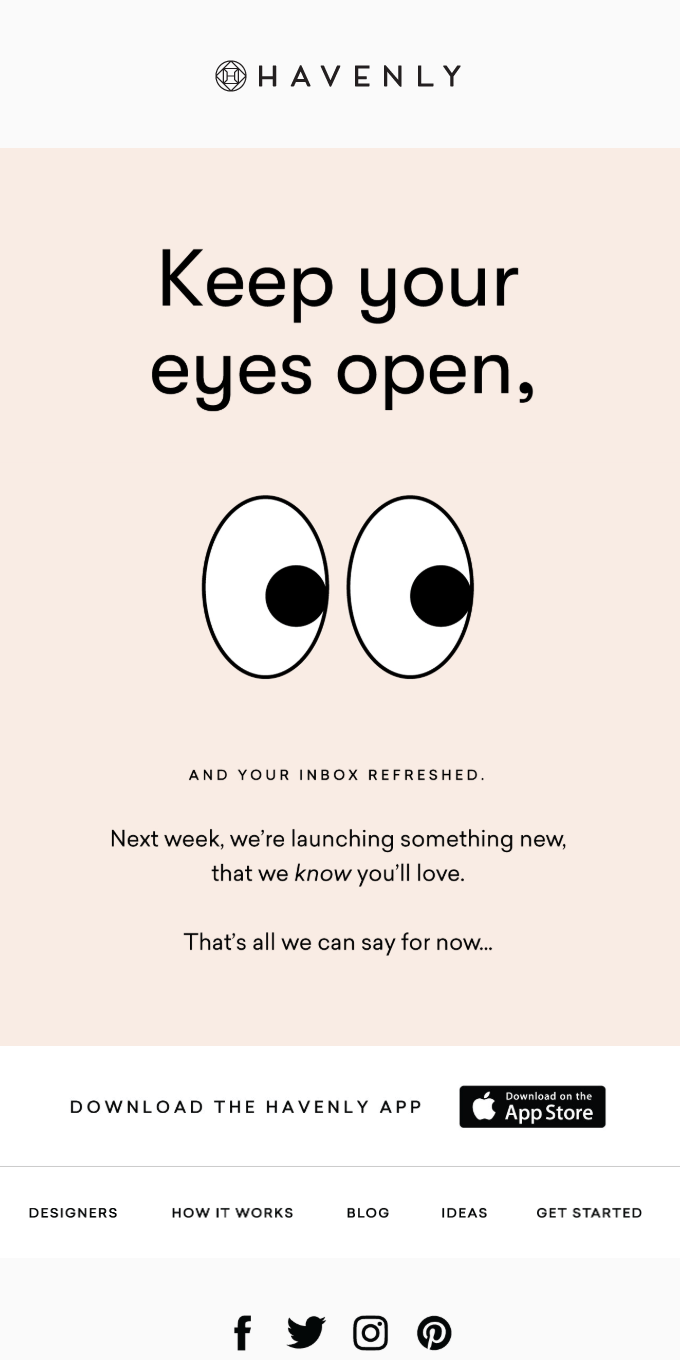
This teaser email was sent a week prior to one of their launches. Both the copy and visuals encourage the user to look forward to opening their inboxes in the upcoming week.
What can be improved?
Instead of letting them guess, Havenly could have given readers a small hint on what the launch was about.
Email types that work best with storytelling
Certain types of SaaS emails are particularly great for including stories. Here are some of them:
- Welcome emails
- Newsletters
- Product updates
- Customer case studies
Let your creativity shine through in your next email
Whether you’re talking about an upcoming product feature or sending out your monthly newsletter, there are multiple opportunities to use stories in your next email.
Taking the extra time to write a good email will keep your readers engaged and let them look forward to your future ones.
Don’t miss out on new articles. Subscribe to our newsletter and get your monthly dose of SaaS email marketing insights.

